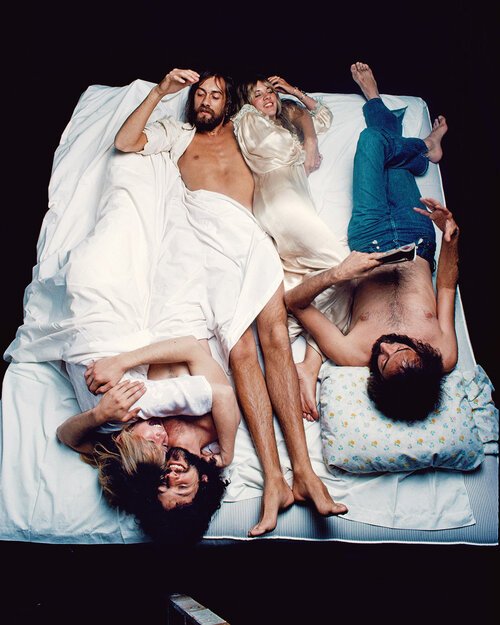Back to the Future?
In a refreshing music scene, filled with promising emerging artists, it’s the tunes from the past that seem to be stealing the spotlight. Fleetwood Mac, Kate Bush, and Abba - just to name a few - are seeing their songs from over 30 years ago, shine with an entirely new light. And we’re all here for it! There’s no doubt that Queen’s “Bohemian Rhapsody” and The Beatles’ “Here Comes the Sun” are in the Olympus of timeless music masterpieces. But who would have thought that tracks popular decades ago would dominate charts in 2024? Also, who could have imagined that we would be watching twelve-year-old kids dancing to these tunes on TikTok?
Fleetwood Mac appeared on the cover of Rolling Stone. Photos by Annie Leibovitz
Whether it’s a wave of nostalgia or the arbitrariness of social media algorithms, one thing is clear: the music world is experiencing a revival of the past. Although music gurus may argue that social media virality is not the kind of hype that “untouchable” evergreens should have, it is undeniable that the algorithm magic is closing the generational gap between youngsters’ music consumption and their parents’ music taste. This is evident in today’s streaming charts, where current hits compete for the first positions with old tunes. Consider Fleetwood Mac’s “Dreams” - 43 years after its first release, it soared back into popularity thanks to a random video on TikTok that went viral at the end of 2020.
And just like that, the song placed itself among the 50 most-streamed tracks on Spotify, re-entering the Billboard Hot 100 alongside The Weeknd and Harry Styles.
However, TikTok is not the only force behind this resurgence. The spark boosting the popularity of old tunes is, in fact, also coming from the so-called “synchronizations” – songs combined with moving images such as films, TV series, adverts, etc. Just think about “Running Up That Hill” by Kate Bush. The song soared to number three on the Hot 100 chart after featuring prominently in the fourth season of Netflix’s Stranger Things. Or think about “Murder on The Dancefloor” by Sophie Ellis-Bextor - the song exploded on TikTok and gained new attention, peaking on UK charts after appearing in the film Saltburn.
The reasons behind this fascinating retro revival are diverse. Surely, the appeal of the bold and vibrant aesthetic of the 80s and 70s also contributes to this contagious attraction to “vintage” tracks. Either way, the reminiscence of the past is not a phenomenon that ends in itself. On the contrary, it comes with several consequences for the music business at large, and it is gradually shaping the future of the industry. Record labels are now increasing their focus on music repertoires in order to make the most out of memes and abrupt moments of popularity of old songs. Aiming at shifting viral songs on social media into proper streaming successes, labels are working on their catalogues as if they were new releases, investing in marketing campaigns or launching repacked versions of CDs or brand-new remixes. It follows that music catalogues of artists from the past are becoming just as much profitable and valuable as current hits.
This trend is also boosting the music library market. Investors are indeed demonstrating a particular interest in diversifying their portfolios with an alternative asset class: the music catalogue, that entails the collection of copyrights connected to an artist’s repertoire. Catalogues from legends like David Bowie, Queen, and Tina Turner continue to draw attention and generate consistent royalties cash flows. For instance, Bruce Springsteen’s catalog was sold to Sony Music Entertainment for an estimated $550 million.
So why is this so relevant for the future of music? In an industry where digital streaming revenues are highly fragmented and difficult to manage, the profits from evergreen hits provide crucial funding for labels to invest in new projects by emerging artists. In conclusion, the resurgence of old hits in today's music landscape is for sure a testament to the enduring appeal of timeless tracks and the power of modern technology to bridge generational gaps. This phenomenon is also creating cyclical benefits that strengthen the entire music ecosystem, showing that the past and future of music are more intertwined than ever. As we move forward, this blend of nostalgia and innovation will continue to shape the industry, offering a rich and diverse musical experience for listeners of all ages.

